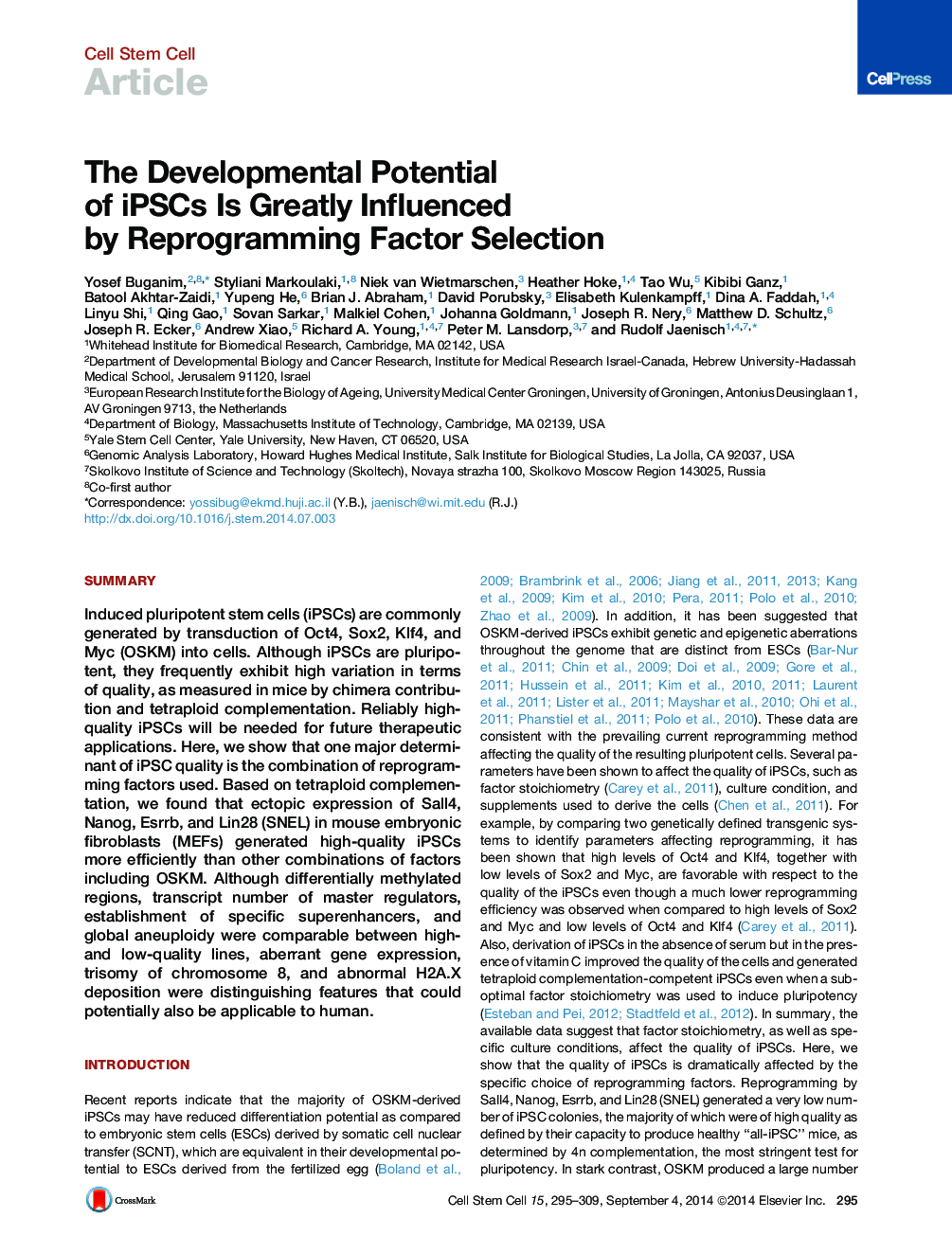| کد مقاله | کد نشریه | سال انتشار | مقاله انگلیسی | نسخه تمام متن |
|---|---|---|---|---|
| 2077345 | 1079702 | 2014 | 15 صفحه PDF | دانلود رایگان |

• Interplay between reprogramming factors is an important determinant of iPSC quality
• High expression of Sall4, Nanog, Esrrb, and Lin28 in MEFs produces high-quality iPSCs
• Trisomy 8 is a frequent genomic aberration in OSK and OSKM-iPSCs
• High-quality SNEL-iPSCs are correlated with faithful H2A.X deposition patterns
SummaryInduced pluripotent stem cells (iPSCs) are commonly generated by transduction of Oct4, Sox2, Klf4, and Myc (OSKM) into cells. Although iPSCs are pluripotent, they frequently exhibit high variation in terms of quality, as measured in mice by chimera contribution and tetraploid complementation. Reliably high-quality iPSCs will be needed for future therapeutic applications. Here, we show that one major determinant of iPSC quality is the combination of reprogramming factors used. Based on tetraploid complementation, we found that ectopic expression of Sall4, Nanog, Esrrb, and Lin28 (SNEL) in mouse embryonic fibroblasts (MEFs) generated high-quality iPSCs more efficiently than other combinations of factors including OSKM. Although differentially methylated regions, transcript number of master regulators, establishment of specific superenhancers, and global aneuploidy were comparable between high- and low-quality lines, aberrant gene expression, trisomy of chromosome 8, and abnormal H2A.X deposition were distinguishing features that could potentially also be applicable to human.
Graphical AbstractFigure optionsDownload high-quality image (274 K)Download as PowerPoint slide
Journal: - Volume 15, Issue 3, 4 September 2014, Pages 295–309